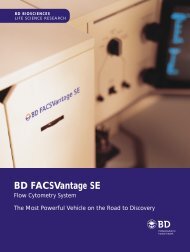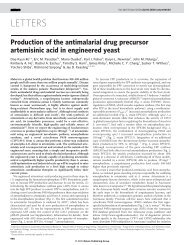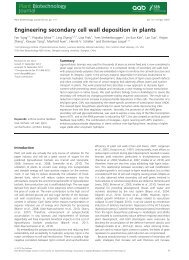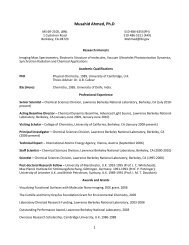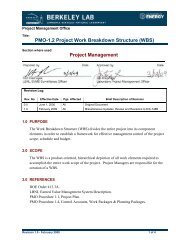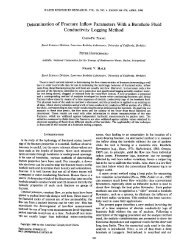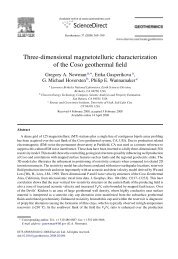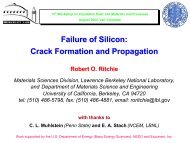LBNL Respiratory Protection Program - Lawrence Berkeley National ...
LBNL Respiratory Protection Program - Lawrence Berkeley National ...
LBNL Respiratory Protection Program - Lawrence Berkeley National ...
You also want an ePaper? Increase the reach of your titles
YUMPU automatically turns print PDFs into web optimized ePapers that Google loves.
• In most cases the employee will be tested with the mask that is issued to the employee,<br />
using an adaptor for use with the PortaCount instrument<br />
• Fit testing may be conducted using a surrogate mask, having the same facepiece size and<br />
style as the mask to be used. Use of a surrogate mask is required when the respirator to be<br />
used is an airline respirator. Surrogate masks may be negative pressure respirators fitted<br />
with adapters, or they may be probed facepieces<br />
• Poorly fitted respirators may leak and fail to provide the required degree of protection. It<br />
may be necessary to don and test several models and sizes in order to identify the bestfitting<br />
respirator<br />
• It is <strong>LBNL</strong>'s Policy (see Appendix J) that employees who have facial hair that intrudes<br />
into the area where the negative or positive pressure respirator seals against the face, or<br />
interferes with valve function, shall not be fitted with (or allowed to use) a tight fitting<br />
facepiece respirator. <strong>LBNL</strong> does not accommodate employees who wish to maintain<br />
facial hair that interferes with respirator fit, unless there is a health issue. Employees with<br />
facial hair who are required to wear a negative or positive-pressure tight-fitting respirator<br />
will need to shave and interfering facial hair so that a respirator can be worn<br />
• If an employee exhibits any difficulty breathing or has a severe psychological reaction<br />
during any phase of the fit testing, they shall be referred to Health Services for medical<br />
reevaluation<br />
• Fit testing will not be conducted until verification that an employee has a completed Job<br />
Hazards Analysis (JHA) indicating respirator use and has been medically approved for<br />
respirator use (if applicable)<br />
• Fit testing shall be repeated whenever necessary, based on physical changes such as:<br />
-weight changes of 20 pounds or more<br />
-significant facial scarring in the area of the face seal<br />
-significant dental changes occur (e.g., multiple extractions without prosthesis, or<br />
dentures)<br />
-reconstructive or cosmetic surgery occurs, or<br />
-any other condition that may affect the facepiece seal<br />
For more information about the quantitative fit testing procedure utilizing the PortaCount, refer<br />
to Appendix C, Quantitative Fit Testing Procedure Using the PortaCount Plus: Operator<br />
Guidelines.<br />
VII. Procedures for Respirator Selection and Use<br />
A. General<br />
This section describes details of the procedures for respirator selection and use at <strong>LBNL</strong>.<br />
B. Respirator Selection<br />
Based on identified hazards, the <strong>Program</strong> Administrator shall maintain and issue respiratory<br />
protective equipment when required by <strong>LBNL</strong> or used voluntarily (except filtering facepieces<br />
and PAPRs). Respirators, cartridges, filters and other components shall be NIOSH-certified. A<br />
<strong>LBNL</strong> <strong>Respiratory</strong> <strong>Protection</strong> <strong>Program</strong> Page 14<br />
V2.4 Revised 3/28/12





